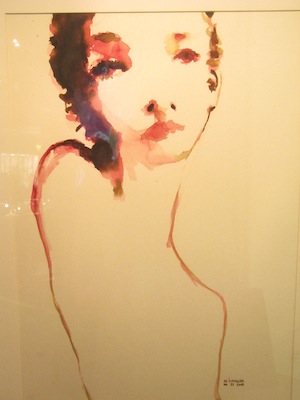Which brings me to Pangan, who’s the best that I’ve seen him here. Without the trappings of a more complex because highly fictionalized or fantastic role, with only the seeming simplicity of a father and husband character, what’s here is pure unadulterated Pangan, and a voice that can move from optimism to helplessness to nostalgic in equal turns. But it’s in that breakdown scene that Pangan proves himself theater actor, with anguish that echoes with everything that has to do with male suffering in the hands of skillful denial, a rendering of patriarchy that we rarely see because it is so painful.
It is pain too, as it is insanity, but even more so clarity, that is in Lauchengco-Yulo’s portrayal of the complexity that is loss and grief in one woman. And when I say woman here, it is Lauchengco-Yulo as body. Her Diana moved across that stage and told this story, not just with words spoken or songs sung, but also and more importantly with movement, deliberately going against that one rational narrative line. Her frowns of confusion, her furtive steps, the questions she asks of doctor / husband / daughter, the routines she kept, the ones she forgot – all gestures not just words, all happening with the weight of her distress. And in the final moment, Lauchengco-Yulo allows Diana to clearly swing between uncertainty and control even as she makes logical the decision to favor self, the most powerful glorious moment in the whole musical, the one time the woman’s body is allowed lightness, is suffused with grace.
Suffice it to say that even just memory of the individual moments of Lauchengco-Yulo’s Diana and Pangan’s Dan brings tears, almost like a melancholia that’s always been and will always be yours as audience. Here is a brilliance that seeps into your spirit and makes you less spectator and almost co-conspirator in the story that unfolds.
